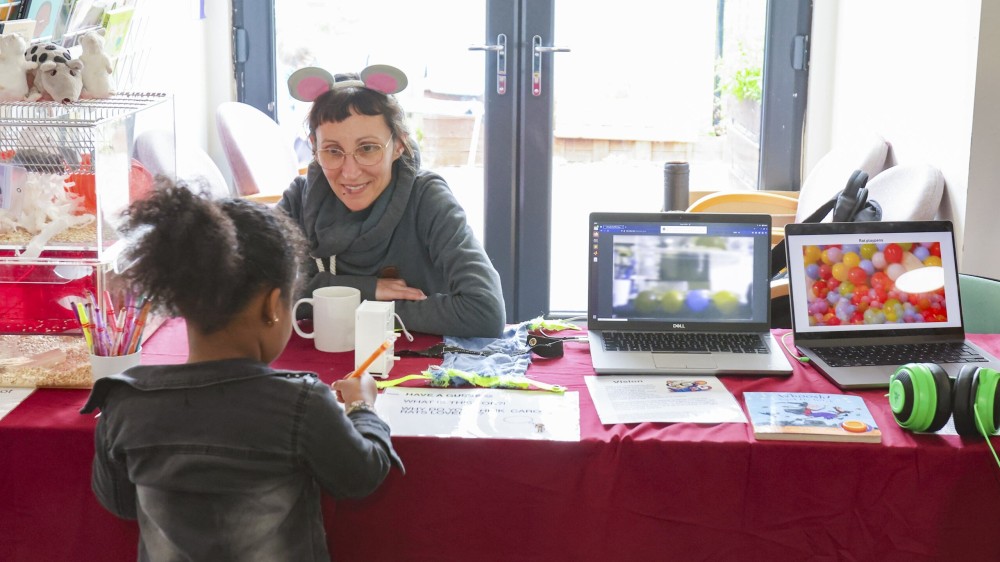Communicating 3Rs research for professional and public audiences
Contents
Introduction
This guidance aims to support our grant holders to communicate the 3Rs and impacts arising from their research. This includes discussing your work with both professional and public audiences. Our advice and approach to communicating the 3Rs will also be useful for other groups whose work involves disseminating or promoting advances in the 3Rs.
Effective and engaging communication of 3Rs advances includes tangible impacts (for scientific progress and animal welfare) and is tailored to the audience's interests, concerns and existing knowledge.
Highlighting 3Rs impacts
3Rs impacts are the most important aspect of your research to communicate. The aim to replace, reduce or refine the use of animals sets important context for your research and these 3Rs benefits should form the centre of your message.
Effective communication of 3Rs impacts encourages the wider uptake of 3Rs advances among the scientific community and maximises the influence of your research. When communicating with public audiences, centring your 3Rs impacts will help you focus on the impetus and importance of your work and address animal use in research and testing.
Most scientists are aware of the 3Rs principles but can occasionally require some assistance in understanding the distinction between each of the Rs and drawing these out of their research.
Some key points to consider when discussing the 3Rs:
- The 3Rs principles were first developed over 50 years ago. Use our modern definitions of the 3Rs to highlight the importance of the 3Rs to modern research practices.
- The 3Rs principles are the foundation of scientific experiments that are robust and replicable, add to the knowledge base, advance understanding of health and disease and minimise the use or suffering of animals in research and testing.
- Researchers all around the world are applying the 3Rs principles to develop new approaches and technologies which can reduce their reliance on the use of animals in research and/or improve welfare where animals continue to be used.
- 3Rs approaches often give results which are more predictive of human physiology and disease than traditional methods – this includes both models which replace animal use to produce more human-relevant data and refining animal use to produce the most physiologically relevant data.
Considering your audience
You should always consider the specific interests, aims and understanding of your audience in advance of activities which involve communicating your research. Tailoring your communication to your audience will help you maximise the reach and impact of your message. Some things to think about before you communicate with a new group:
- What is their level of scientific literacy?
- Do they have a special interest in your subject?
- What tangible benefits/messages will resonate with them?
- What do they want to get from talking to you?
Scientists
Key message/goal: The 3Rs principles are based on a scientific approach which stands to improve the quality and translatability of research.
An increasing number of scientists are engaged in the 3Rs and are familiar with the NC3Rs, though they may not be familiar with the breadth of work that we undertake. Be careful not to oversimplify your message for a scientific audience, but it is important to remember that 3Rs research crosses all the scientific disciplines – you may be talking to an expert from a very different field, meaning that some of the basics of your own field may still need to be covered.
The non-scientific professional
Key message/goal: Advances and innovation in the 3Rs are delivering change in institutes and laboratories as a way to approach science that is often faster, cheaper and more informative.
As well as scientists you may also find yourself explaining the 3Rs or your work to other professionals, such as representatives from other research funders and regulatory authorities. More detail may be appropriate for this audience than for a public audience, but technical language should be avoided.
The public
Key message/goal: To raise awareness of the 3Rs principles and the existence of a UK National Centre dedicated to them, and the impact of research to replace, reduce and refine animal use.
To have the most impact, the take home message should be simple and clear – consider the top-level messages and aims of your work. Jargon should be avoided and background and context should be given rather than assumed. It is helpful to think about an ‘elevator pitch’ in advance of a public-facing event/activity. If you only had the time of an elevator ride with someone to explain your research, what you would say?
Public engagement
Polls consistently show that the public would like to be better informed about efforts being made to seek alternatives to animals in research, to minimise animal use and improve welfare (Ipsos MORI, 2018; Savanta, 2022).
Our public engagement award scheme encourages and supports those working to advance the 3Rs to share their work with public audiences, including school children and patient groups. We aim to promote a series of thought-provoking events and activities across the UK.
Read more about the awards and projects we have funded in our blog: Public engagement with the 3Rs.
Resources supported by NC3Rs public engagement awards
A 'top trumps' style card game on the approaches scientists can use to replace animals in biological research. The cards can be used to educate, engage and facilitate discussion at events including science fairs and workshops, public talks and school visits. They are available as a printed pack or a digital download.
Find out more about how you can use the trump cards in your public engagement and outreach activities, in this article from the card game's creator Dr Jo Sharpe.

Request a pack of cards
Activities to make the science of developing and testing new medicines accessible for young people and introduce 3Rs concepts and considerations in drug development. Originally designed with Scouting and Guiding units in mind, with the opportunity to earn a bespoke badge, the resource packs are also suitable for school sessions, home education groups and science clubs.
The badge pack for children aged 5 to 10 contains full instructions with pictures, templates and print-outs, a lay overview of the science behind each activity and QR codes to access videos to meet the scientists and tour their labs and facilities.
A separate badge pack for older participants, aged 10 to 16, will be available soon.

Further NC3Rs resources
- Video: Introduces the 3Rs for new audiences and provides further information on their definition, application and importance.
- Webinar: The importance of effective communication for scientists alongside strategies and tips for identifying key messages, science writing and adapting to different audiences, tailored to 3Rs research.
- Blog: Advice and written examples on targeting your audience, highlighting the 3Rs and addressing animal use.
- Writing about the 3Rs: Guidance tailored for communicating 3Rs impacts in grant applications – many of these principles apply to different audiences and purposes.
Find out how we engage the public with the 3Rs and share advances that improve animal welfare and deliver better science.

